
Last month, Allan gave a thought-provoking presentation on how to develop one’s artistic skill with bonsai and/or penjing. Using Sydney artist Lindy Lee’s advice to young visual artists, Allan introduced us, through example, to the art of appropriation and its extension into artistic practice.
Lindy refers to what she calls the Second Year Crisis- ‘When you finish your initial training and you’re let loose to create your own work… Fear rises up [and] you ask yourself; What the hell are you going to make art about?’ The situation is not dissimilar to when one has finished the first year of bonsai/penjing training when the basic skills are in place but the direction to go is unclear.
Lindy’s advice is to ‘allow yourself to be attracted to images… and then allow a deeper intuition to take place.’ With this in mind, Allan collects images that appeal to him and encourages his students to do the same. These provide a direction to move forward.
In many cultures, copying is a way to learn and not frowned upon as it is in the West. (In fact, as Michael Kempson pointed out, Visual Arts students in Chinese universities copy images for the first and second years of their training.) With this in mind, Allan brought along a number of trees that illustrated this process.
Allan started by explaining that all Chinese trees have focal point, just like the pearl in the common Chinese image of a dragon clutching a flaming pearl in its claws. Here the pearl (representing spiritual energy, prosperity, power etc.) is the focal point but in a tree it would be the design feature that attracts the viewer’s attention.
Allan is very attracted to the relatively new and very popular in China penjing style of Suren, named after the Buddhist monk Suren (1895-1962) who developed it. It is like the literati style but more extreme; aloof, sparse, plain and minimalist with a refined elegance and Allan’s first two trees clearly demonstrated these qualities. As Allan explained, they are meant to be just what they are.
Allan showed the photo that had influenced him (left hand side) and then discussed the tree he had developed (right hand side).
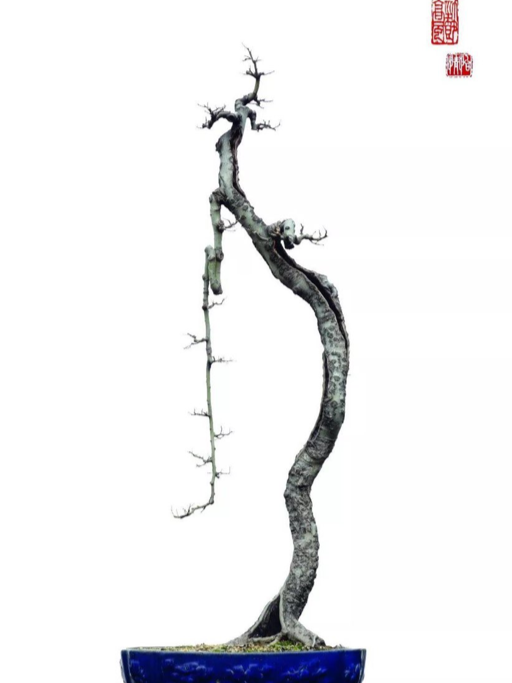
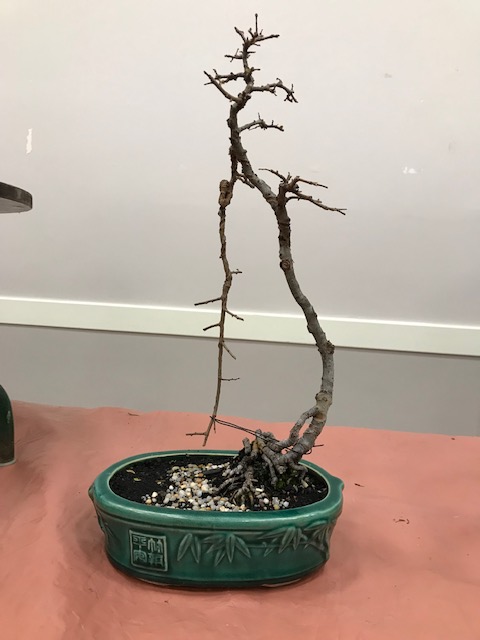
Both these trees have a very, very strong sense of line with the focal point being the little fusion on the vertical branch on the left.
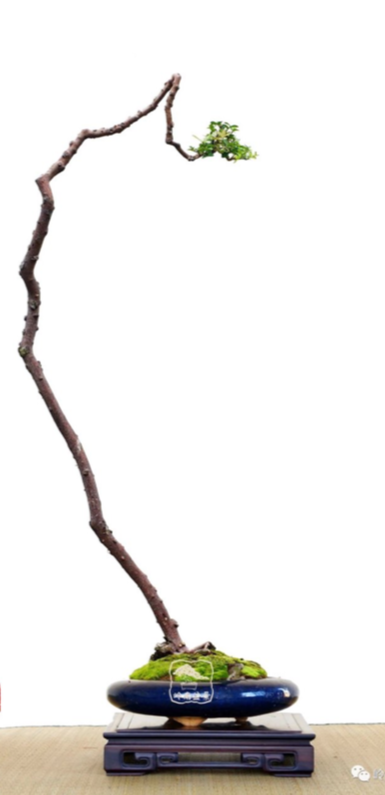

The second example was a zelkova, bought at the Nepean Show. The inspiration tree has a gradual and subtle taper and Allan’s tree mirrors this. The sharp bend is its focal point and could not be achieved if the right material had not been selected. The top bend was very difficult to achieve and had to be done in stages, very slowly, using tiny cable ties. Luckily it did not break.
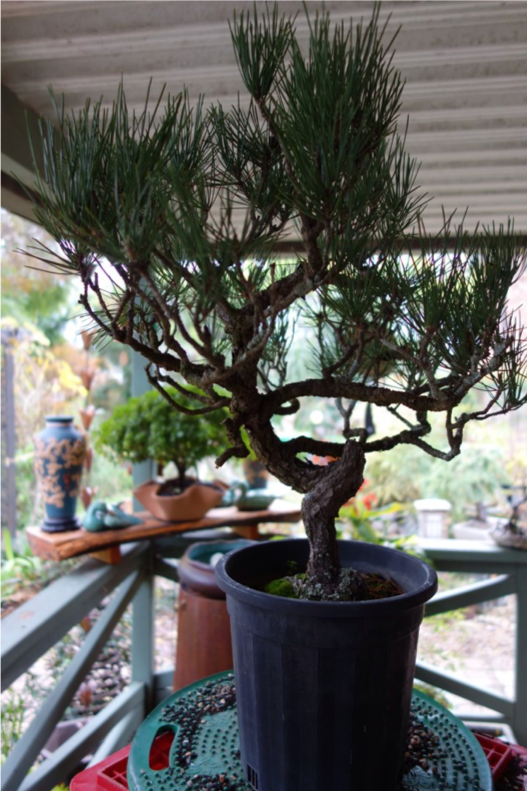
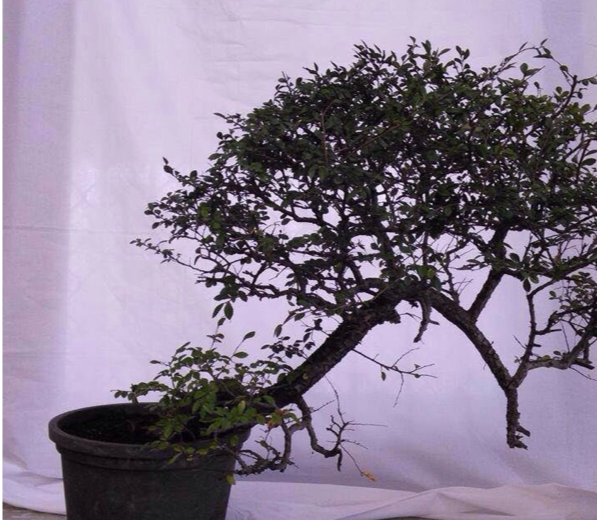
Allan’s third tree was a Japanese black pine grown by Dorothy Koreshoff in 1969. Alan saw the very big fused bend in its trunk as its focal point and chose this super slanting style, often seen in China, to best reveal this.
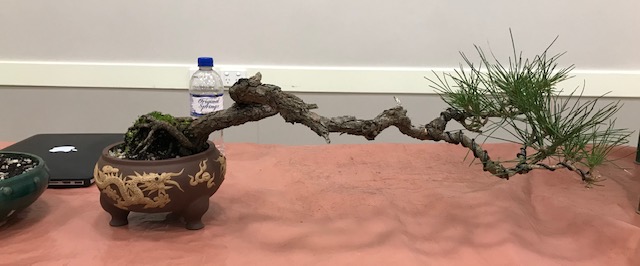
Allan will allow this tree to ‘grow its head off’ for twelve months to regain its vigour and then work on it. In China, trees are let go every three years and then restyled the following year.
Tree 4 four started out as a very big blob of a Chinese elm but it did have a very pronounced bend. What to do? Cut it off? Hide it with foliage? Or choose a Chinese style? Allan’s solution was to have the branches mirror the roots.
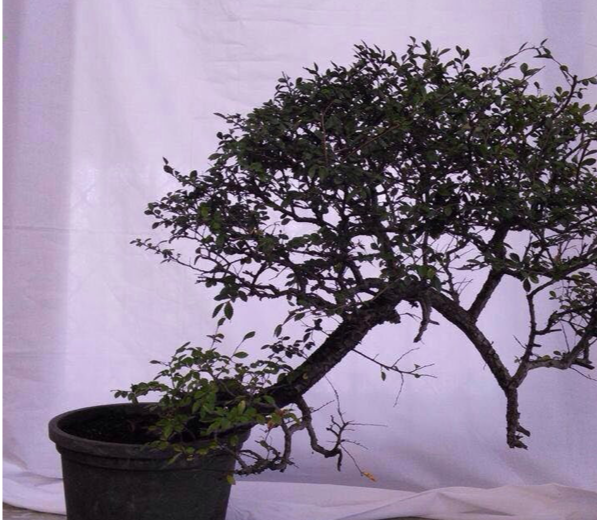
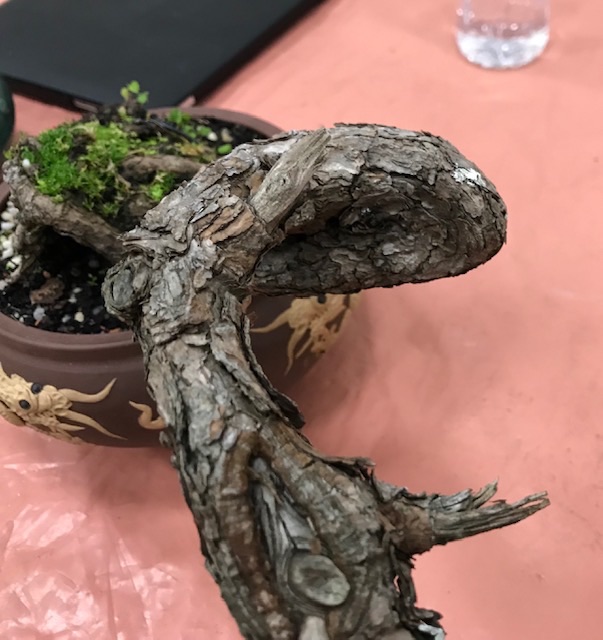
For his last example, Allan brought a silver birch that had been overlooked for some time and the options for this tree were worked through with the audience and photoshop to canvas the various possibilities.
Allan ended with an overview of Chinese branch styles that was both interesting and informative.
